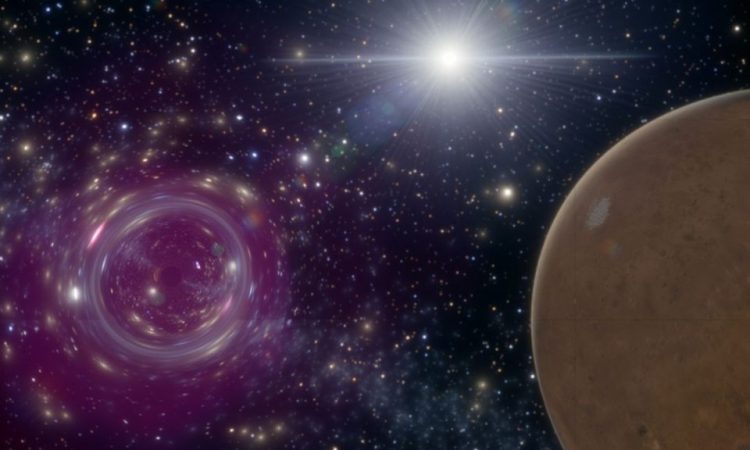
Observing changes in the Red Planet’s orbit over time could represent a new way to detect the passage of dark matter.
Small, ancient black holes may whiz through our solar system as often as once a decade, according to a new study. We could spot them by observing an oscillation, and this could help us better understand dark matter. Primordial black holes (PBHs) are hypothetical objects that could have arisen in the first second after the Big Bang from dense pockets of collapsing ionized matter. Over the last 13.8 billion years they would then have spread across the cosmos.
Advertisement
What do primordial black holes have to do with dark matter
If the invisible masses that pervade the universe and are perceptible only through the force of gravity sound familiar to you, well, it’s no coincidence: PBHs are one of the prime candidates for “find” . Now, a team of physicists in the United States has calculated how often they might cross the Solar System, based on estimates of the distribution of dark matter in a certain region of space.
Scientists have found that a primordial black hole, with a mass equal to that of an asteroid in a space the size of a single atom, would pass through the inner Solar System about once every 10 years. While we wouldn’t be able to see it directly, such a visitor would still make its presence known. The team found that if a PBH approached within about 450 million kilometers of Mars, it would trigger a detectable wobble in the red planet’s orbit.
The shift would only be 1 meter over 10 years, but it would be enough for sensors to detect it, since we can measure the distance of Mars from Earth to an accuracy of about 10 centimeters.
Details of the study on these small black holes
The study began with a hypothetical question: What would happen if a PBH zoomed past a person? The lead author, astrophysicist Tung Tran of MIT, roughly calculated that if one of these objects came within 1 meter of you, you would be thrown about 6 meters away in 1 second. While this scenario is extremely unlikely, the team wondered how a PBH flying through the solar system might affect planets and moons.
Then, the researchers simulated the effects of a PBH flyby of Mercury, Venus and Mars to see if their wobbles would be easier to spot. Of these, Mars provided the clearest signal. The question that arises is: if a PBH with the mass of an asteroid can do this, won’t passing by it exert the same influence? The answer is yes, more or less. But the effect would be different.
One of the greatest cosmological mysteries
Asteroids move relatively slowly and tend to stick to the same “disk” around the Sun as planets, so their interactions occur over longer time scales. But a PBH hurtles through, from any direction, at up to 200 kilometers per second. Their rapid interactions stand out as a single point in time. However, more detailed simulations involving multiple objects will be needed to better understand these dynamics. We don’t even know for sure that primordial black holes exist. But with a little more work, it’s possible that astronomers could get lucky, spot a Martian wobble and unravel one of the biggest cosmological mysteries.
Read more:

